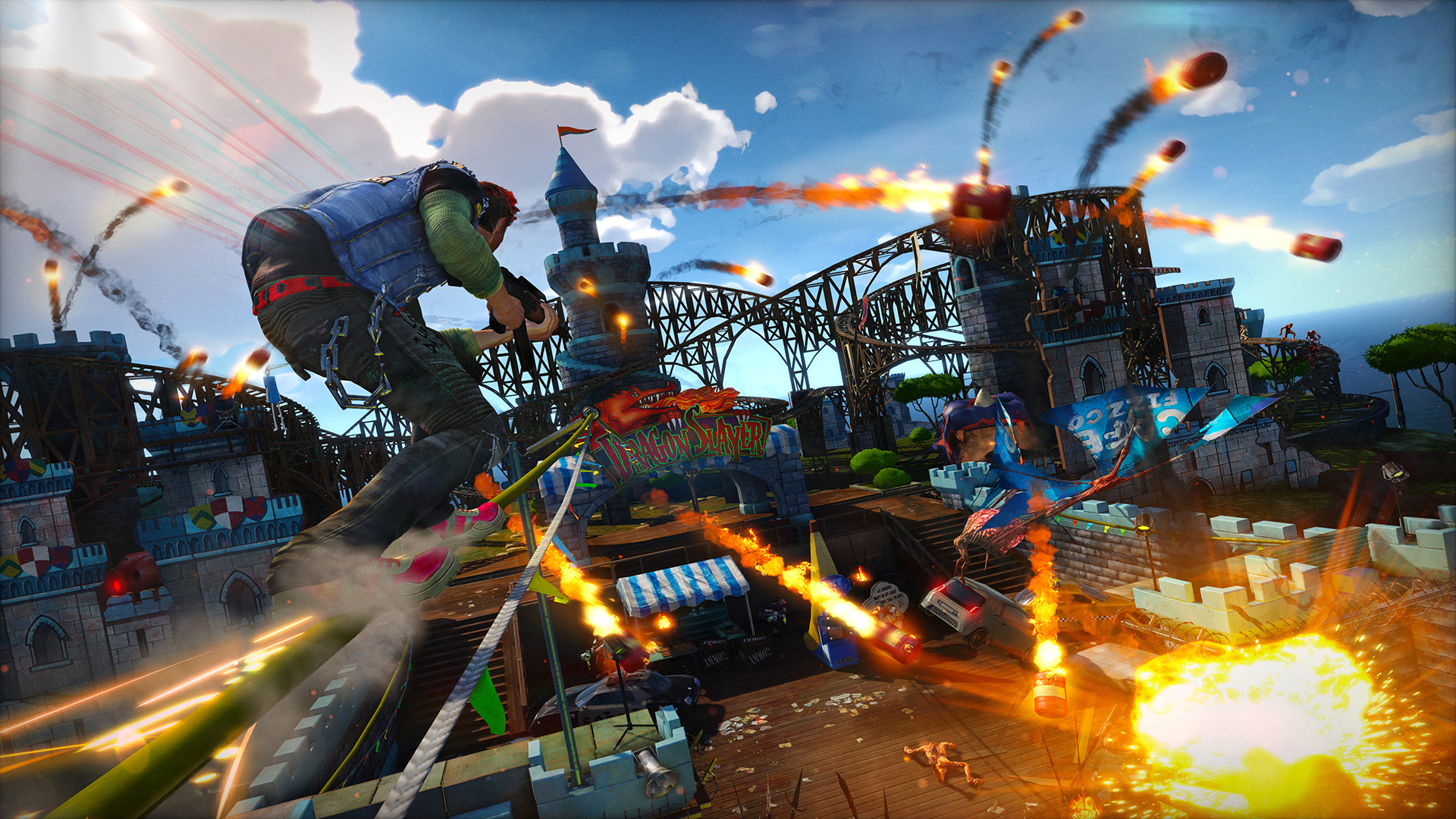The Legend of Zelda franchise has been a prominent figure in the gaming industry since its inception in 1986. As one of Nintendo’s most beloved series, The Legend of Zelda has captured the hearts of players with its engaging gameplay, captivating narrative, and memorable characters. The Nintendo 64 console was home to one of the most definitive entries in the franchise, The Legend of Zelda: Ocarina of Time. This game quickly became a fan favorite, praised for its intricate puzzles, immersive world-building, and iconic soundtrack.
In this article, we will explore The Legend of Zelda: Ocarina of Time’s history and impact on the gaming industry, as well as its gameplay, graphics, sound design, replayability, and story. We will rate the game on a scale of 1 to 10 based on the criteria discussed in each section, providing our audience with a comprehensive overview of what makes The Legend of Zelda: Ocarina of Time a game worth experiencing.
The Legend of Zelda: Ocarina of Time – Gameplay
The gameplay of The Legend of Zelda: Ocarina of Time remains one of the most iconic and memorable in video game history. The game’s combat mechanics are straightforward, yet compelling. Swordplay forms the backbone of the gameplay, while a variety of other items such as bombs, arrows, and boomerangs, add tactical depth to the combat.
The puzzles in Ocarina of Time are equally satisfying, with inventive and challenging scenarios designed to test players’ problem-solving skills. The game’s dungeons are perhaps the highlight of the experience, each one a self-contained maze of traps and obstacles that must be navigated to reach a climactic boss battle. The game’s overworld is also vast and beautiful, packed with secrets to uncover and items to discover.
In terms of difficulty, Ocarina of Time is a game that is accessible to all types of gamers. Beginners will find the opening hours relatively easy to grasp and get into, while more experienced players can tackle the game’s tougher challenges, such as the Water Temple. Compared to other games in the genre, such as Final Fantasy VII or Chrono Trigger, Ocarina of Time has a shallower learning curve that makes it easier to pick up and play.
In summary, the gameplay of The Legend of Zelda: Ocarina of Time is a timeless masterpiece. The combination of combat, puzzles, and exploration creates an experience that is both satisfying and immensely rewarding. The game’s accessibility, coupled with its impeccable design, ensures that it remains a classic even today.
For a game that was released in 1998, The Legend of Zelda: Ocarina of Time’s graphics still hold up remarkably well today. The world in which the game takes place is dynamic, intricate, and wonderfully rendered. The environments are richly detailed, creating a sense of immersion that has stood the test of time. The characters are beautifully designed and animated, bringing the world to life in a way that few other games have managed to do.
Even in the current era of gaming, The Legend of Zelda: Ocarina of Time’s graphics still stand out. The game’s art style is timeless, with a perfect balance between realistic textures and more stylized, cartoonish elements. The game’s character models have a charm and whimsy that is rare in modern games, and the animations are smooth and fluid.
Compared to other games of the era, The Legend of Zelda: Ocarina of Time’s graphics were unparalleled. The game’s use of 3D graphics was revolutionary, and it set a new standard for what was possible in a video game. Even today, more than two decades later, few games can match the level of artistry and technical excellence on display in The Legend of Zelda: Ocarina of Time.
Overall, The Legend of Zelda: Ocarina of Time’s graphics are a triumph of both design and technology. The game remains one of the most visually stunning and impressive games ever made, and even after all these years, it continues to be a showcase for what can be achieved when developers push the boundaries of what is possible in video games.
The Legend of Zelda: Ocarina of Time – Sound Design
One aspect of The Legend of Zelda: Ocarina of Time that stands out is its impressive sound design. From the haunting melodies played on the titular Ocarina to the clanging of swords during battles, the audio in this game adds a new layer of immersion to the already immersive gameplay experience.
The music is composed by Japanese composer Koji Kondo, who is well known for his work on The Legend of Zelda and Super Mario Bros. franchises. The Ocarina tunes have become iconic and are instantly recognizable to many gamers.
Moreover, the sound effects contribute to the overall gameplay experience. The gravel crunching beneath your boots as you walk across a field, the sound of the Kokiri Sword slicing through bushes, and the screech of the Stalfos all make for a captivating gameplay experience.
Compared to other games of its era, Ocarina of Time’s sound design is unparalleled. The music and sound effects are designed to immerse the player in the game world and add to the overall experience. Even twenty-four years after its initial release, the audio in this game holds up and adds to the nostalgia factor that many gamers feel.
Story
When it comes to The Legend of Zelda: Ocarina of Time, one cannot ignore the game’s compelling story and unforgettable characters. The game’s story follows Link, a young hero tasked with saving the kingdom of Hyrule from the evil Ganondorf. As he ventures through different dungeons and unlocks new abilities, he discovers more about the world and his own destiny.
The narrative is excellently crafted, drawing players in with its combination of adventure, fantasy, and mystery. As players uncover different pieces of the story, they become more invested in Link’s journey and the world he inhabits. This investment is only amplified by the memorable characters players encounter along the way, like the lovable Kokiri forest fairy Navi and the heroic Princess Zelda.
Overall, The Legend of Zelda: Ocarina of Time’s story is masterfully told, with multiple twists and turns that keep players engaged until the very end. The way the story connects with the world and gameplay is seamless, creating a truly immersive experience unlike any other game in its genre. When compared to other games of the same genre, only a handful come close to matching its level of storytelling mastery.
Replayability
The Legend of Zelda: Ocarina of Time is a game that offers a great deal of replay value for gamers. Here are some key factors that contribute to its replayability:
– Multiple gameplay choices: Throughout the game, players can make choices that impact the story’s outcome. This feature adds depth to the game and makes it worth playing again to explore different paths.
– Alternate endings: Depending on the player’s choices, there are several alternate endings to the game. This feature ensures that players will have a unique experience every time they play the game.
– Hidden secrets: The game has plenty of hidden locations and secrets that even experienced players may not discover the first time around. This feature allows players to replay the game with the incentive of uncovering hidden treasures and new experiences.
Compared to other games in the same genre, The Legend of Zelda: Ocarina of Time stands out as one of the most replayable games. These replayability features make the game challenging and engaging, even for players who have already experienced it.
Conclusion and Rating:
After a thorough examination of The Legend of Zelda: Ocarina of Time, it’s clear that this game deserves its place in video game history as a true classic. The gameplay mechanics are diverse, providing a variety of challenges and keep the player engaged. The puzzle-solving aspect keeps the player thinking outside the box, and the combat is both challenging and satisfying.
The visuals of The Legend of Zelda: Ocarina of Time are impressive even by today’s standards. The character and world design are memorable and ingenious, helping create an immersive gaming experience. Similarly, the sound design elevates the game, with its iconic soundtrack and sound effects that genuinely enhance the gameplay.
The story is intriguing and thoughtfully executed. The story’s plot twists, combined with strong character development, keep players invested throughout the game. Even with its age, the game still has a lot of replayability, with its varied ending possibilities.
Overall, The Legend of Zelda: Ocarina of Time deserves to be in every gamer’s collection, and we highly recommend it to players of all skill levels. Based on the guidelines discussed in each section, we give this game a rating of 9 out of 10. It’s a game that stands the test of time and will continue to be celebrated as a classic in the video game industry.
FAQs
-
Is The Legend of Zelda: Ocarina of Time only available on Nintendo 64?
No, the game has been released on other platforms such as the Nintendo GameCube, Nintendo 3DS, and Wii Virtual Console.
-
What is the ESRB rating for The Legend of Zelda: Ocarina of Time?
The game is rated E for Everyone by the ESRB. It contains mild fantasy violence and animated blood.
-
Can I play The Legend of Zelda: Ocarina of Time on my modern gaming console?
Yes, the game is available on the Nintendo Switch Online service for subscribers and as a 3DS download.
-
Is The Legend of Zelda: Ocarina of Time a linear game?
No, the game allows for exploration and has non-linear elements, allowing the player to complete tasks in various orders.
-
What is the average playtime of The Legend of Zelda: Ocarina of Time?
The game takes around 20-30 hours to complete, but completion time may vary based on player skill and gameplay choices.




